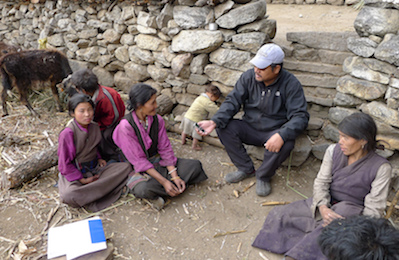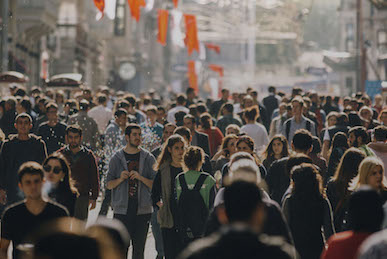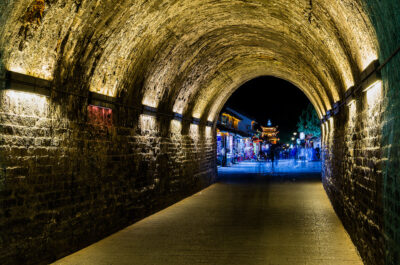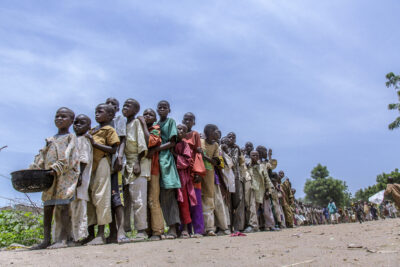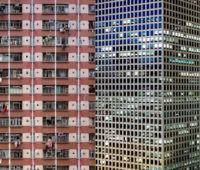Great leaps in human history are the result of understanding something new, sometimes in the most unexpected ways. Landing on the moon required understanding how an apple falls to the ground, winning WWII required understanding computing, and the creation of massive internet searches required understanding social influence. What does it take to make human societies […]
How can the core characteristics of big cities be mobilized to make human life more just and democratic? Premised on the centrality of urban space to human experience and the great challenges and opportunities produced by urban concentration across the globe, the Social Science Research Council’s initiative on The Decent City seeks to deepen understanding and improve practice by creating interactions among social scientists, humanists, architects, designers, and urban planners. The Cities Papers are thought pieces produced by scholars and practitioners from all these perspectives who participated in several gatherings to further shape the initiative’s agenda.
A “decent” city, in our usage, is not quiet, orderly, or predictable, each of which is alien to robust urban life. The term is meant to imply a site of reflection, research, and policy in a zone between more utopian reflections on the one side and highly focused instrumental policy considerations on the other. Substantively, it connotes cities in which built environments and the organization of space diminish and soften various dimensions of inequality and promote relations among diverse populations that are neighborly. We are deploying a spatial imagination to interrogate design, toleration, and inequality as key concepts and sites as we search for thresholds of urban decency and means to achieve them.
Reflections on the Decent City
by Diane DavisEither in terms of analytical power or humanist principles, is the term “decent” the most appropriate starting (or ending) point in establishing a research agenda and a normative commitment to maximize tolerance, equality and inclusion? Clearly, this concept invites us to think about how to identify or produce just, humane, and livable city spaces. But […]
Decency, Design, and Development in New York City’s Historically Black Neighborhoods
by John MollenkopfPreliminary thoughts The dictionary definition of “decency” indicates a certain ambiguity in the meaning of the term. It can indicate conformity to minimum social standards, such as meeting “standards of taste, propriety, or quality,” in the sense of decorum or orderliness and being “free from immodesty or obscenity”. But it can also mean “having praiseworthy […]
Urban Cleansing: Evictions, Insecurity, and Intolerance in Global Perspective
by Liza WeinsteinAt a rally outside the offices of the Minneapolis Public Housing Authority, residents and activists protested the eviction and relocation of hundreds of families from their North Side homes, many of them refugees from the Hmong community. “We talk about ethnic cleansing in Kosovo,” activist Reverend Curtis Herron announced at the rally. “We are talking […]
Design Decency at the Urban Front
by Harvey MolotchThere is an old design adage of “spoon to city,” the idea that every aspect of the physical environment needs to be considered in tandem and be rendered in a coherent way. In 20th century practice, this typically meant something like having the simple lines of a household toaster, say, resemble the similarly geometric shape […]
Designing the Transformation of the Decent City: Theory and Practice
by Aseem InamWhat is urban design? The question has been asked numerous times and many continue to wrestle with it. However, I believe that it is not a very useful question to ask. First, such a question tends to focus on a narrowly defined answer that rests on the status quo. Second, the term urban design conveys […]
Six Steps Toward Inequality
by Gerald FrugThere are many ways to try to understand how inequality within metropolitan areas is produced. Here, I will focus only on one of them: the role of the legal system. I will limit myself to a discussion of American law. In the United States, there are six legal steps that, taken together, help generate spatial […]
Harlem in the 2000s: Diversity, Revitalization, Gentrification, and Equity
by Susan FainsteinWhen we consider the characteristics of a decent city, we usually identify diversity and inclusiveness as important characteristics. At the same time, gentrification, which can produce greater heterogeneity in previously ghettoized neighborhoods, is feared for its displacement effects on low-income residents. Additionally, original inhabitants often resent the cultural differences and implied superiority of wealthier incomers. […]
Diversity, Toleration, and Space in Metropolitan America
by Thomas SugrueIn metropolitan America, particularly in those conurbations that have grown increasingly diverse by race and ethnicity in the last few decades, America’s past and its uncertain future collide. On one side are deep historical patterns of segregation and hypersegregation that reinforce racial inequality and hostilities, particularly between black and white; on the other, an increasingly […]
Youth, the City, and Public Interventions: Challenging Patterns of Inequality and Separation
by Teresa CaldeiraYouth groups are at the core of processes transforming cities and public spaces all over the world. In many cities, their presence is hard to miss, as they hang out in public in large numbers, circulate intensively, and create diverse styles of street art and performance. Many conditions put them at the center of the […]


